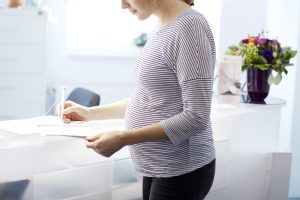Evening chronotype linked to unhealthy lifestyles and increased diabetes risk, reveals cohort study

In a recent study published in the Annals of Internal Medicine, researchers explored the effect of adjustable lifestyle habits on the relationship between chronotype and risk of diabetes in the United States (US).
Background
Chronotype, or circadian preference, is a largely genetically driven construct that refers to a person’s predilection for earlier or later sleeping periods. Evening chronotype has been linked to unhealthy lifestyles, metabolic dysfunction, sleep problems, poor glycemic management, and an increased risk of type 2 diabetes.
Evening chronotype may increase diabetes risk due to circadian misalignment, which occurs when circadian biological rhythms, such as sleep-wake cycles, body temperature regulation, hormone secretion, and metabolism, are not synchronized with social (such as work time) and physical (such as light) environments.
About the study
In the present prospective cohort study, researchers evaluated the impact of adjustable lifestyle variables on the relationship between chronotypes and risk of diabetes. Particularly, researchers examined the links between chronotype and lifestyle characteristics among middle-aged females, as well as changes in the link between the evening-type circadian preference and the risk of diabetes by lifestyle variables.
Data from Nurses’ Health Study II (NHSII) participants were analyzed. The sample population comprised 63,676 nurses aged between 45 and 62 years without a history of diabetes, cardiovascular disease, or cancer in 2009. All participants were followed through 2017. The outcome measures included a self-documented chronotype assessed using the validated Morningness-Eveningness Questionnaire in 2009 and 2015. In addition, lifestyle variables such as body mass index, physical fitness, dietary quality, alcohol consumption, sleep duration, and smoking habits were assessed.
Cases of new-onset diabetes were self-documented and verified using supplementary questionnaires. Diet was evaluated using semi-quantitative food-frequency questionnaires (FFQs), and Alternative Healthy Eating Index-2010 (AHEI) scores were analyzed to determine the dietary quality. Physical fitness was assessed using validated questionnaires and quantified as the total metabolic equivalent of task (MET) hours weekly for 11 recreational activities.
Lifestyle was assessed based on the Healthy Lifestyle Score (HLS). Individuals diagnosed with diabetes had either of the following: (i) diabetes symptoms with fasting blood glucose levels of 126 mg/dL or higher or a random blood glucose level of 200 mg/dL or higher; (ii) two elevated blood glucose readings at different times; (iii) hypoglycemic drug use; or (iv) glycated hemoglobin (HbA1c) values of 6.5% or higher for diabetes cases reported after 2010, based on the American Diabetes Association recommendations.
The team calculated the duration of rotating night shifts per month in a lifetime and documented rotating night shifts in 2009, 2011, and 2013. Individuals who were lost to follow-up and those with missing data on diabetes diagnosis dates were excluded from the analysis. Poisson regressions and Cox proportional hazard modeling were performed to determine the adjusted hazard ratios (HRs). In addition, prevalence ratios (PRs) were estimated. Sensitivity analyses were performed by analyzing HLS scores calculated excluding BMI and alcohol intake and restricting the analysis to individuals reporting consistent chronotypes between 2009 and 2015.
Results
At study initiation in 2009, among the participants, the mean age was 54 years, 97% were white, 67% were post-menopausal, and 32% were from the Midwest, with a mean annual household income of $83,379. Definite morning and evening phenotypes were reported by 35% and 11% of individuals, respectively. Compared to the definite morning chronotype group, the definite evening chronotype group individuals showed a lower likelihood of residing in the Northeast or working in outpatient settings but a higher likelihood of being depressed and having worked rotating night shifts.
Individuals with the “definite evening” circadian preference showed a 54% higher likelihood of having unhealthy lifestyles than the “definite morning” type chronotype group participants. In total, 1,925 individuals were diagnosed with diabetes throughout 469,120 individual-years.
In comparison to “definite morning”-type chronotype group individuals, the HRs for diabetes were 1.2 and 1.7 for intermediate-type and definite evening-type chronotype group individuals, respectively, after adjusting for diabetes history among family members, sociodemographic variables, and shift work.
Further, adjusting for body mass index, physical fitness, and dietary quality weakened the relationship, comparing individuals with definitive evening and morning circadian preferences to 1.3, 1.5, and 1.6, respectively. Considering all sociodemographic and lifestyle measures yielded a weaker but positive relationship (HR value for definite evening versus definite morning chronotypes, 1.2).
Conclusion
Overall, the study findings showed that middle-aged female health attendants with the evening-type circadian preference had greater chances of documenting unhealthy lifestyles and had a heightened risk of diabetes compared to the morning-type chronotype individuals. Adjusting for lifestyle variables such as body mass index, diet, and physical fitness attenuated the risk of diabetes.








